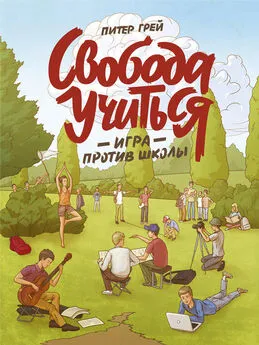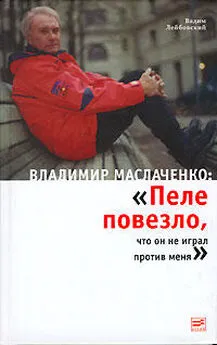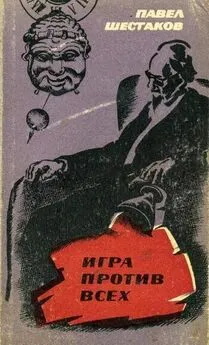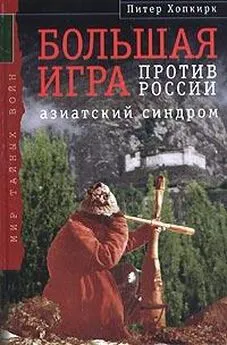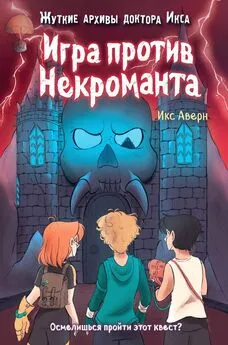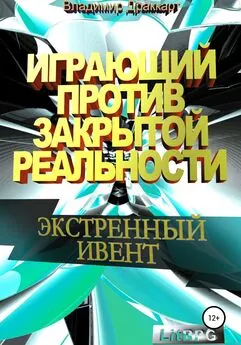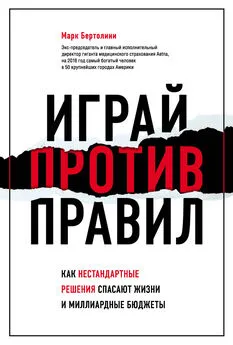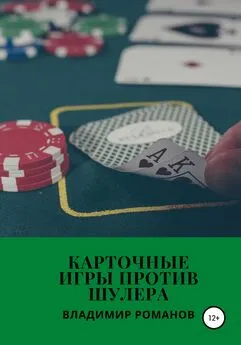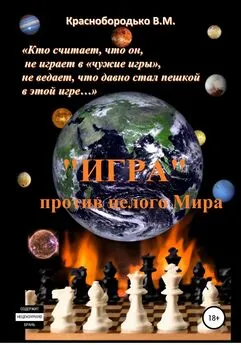Питер Грей - Свобода учиться. Игра против школы
- Название:Свобода учиться. Игра против школы
- Автор:
- Жанр:
- Издательство:Манн, Иванов и Фербер
- Год:2016
- Город:Москва
- ISBN:978-5-00100-207-9
- Рейтинг:
- Избранное:Добавить в избранное
-
Отзывы:
-
Ваша оценка:
Питер Грей - Свобода учиться. Игра против школы краткое содержание
Книга предназначена для родителей, воспитателей, учителей и всех, кто заинтересован в улучшении образования в нашем обществе.
На русском языке публикуется впервые.
Свобода учиться. Игра против школы - читать онлайн бесплатно полную версию (весь текст целиком)
Интервал:
Закладка:
Rubin, K. H., Fein, G. G., & Vandenberg, B. (1983). Play. In P. H. Mussen & E. M. Hetherington (Eds.), Handbook of child psychology, vol. 4, 693–774. New York: Wiley.
Ruff, H. A. (1986). Components of attention during infants’ manipulative exploration. Child Development, 75, 105–114.
–. (1989). The infant’s use of visual and haptic information in the perception and recognition of objects. Canadian Journal of Psychology, 43, 302–319.
Sadofsky, M., Greenberg, D., & Greenberg, H. (1994). Kingdom of childhood: Growing up at Sudbury Valley School. Framingham, MA: Sudbury Valley School Press.
Sahlins, M. (1972). Stone age economics. Chicago: Aldine-Atherton.
Salamone, F. A. (1997). The Yanomami and their interpreters: Fierce people or fierce interpreters? Lanham, MD: University Press of America.
Saltz, E., Dixon, D., & Johnson, J. (1977). Training disadvantaged preschoolers on various fantasy activities: Effects on cognitive functioning and impulse control. Child Development, 48, 367–380.
Schneller, R. J. (2002). Farragut: America’s first admiral. Dulles, VA: Brassey’s.
Schonert-Reichl, K. A., Smith, V., & Zaidman-Zait, A. (2011). Effectiveness of the Roots of Empathy program in fostering social-emotional development in primary grade children.Manuscript submitted for publication.
Schulz, L. E., & Bonawitz, E. G. (2007). Serious fun: Preschoolers engage in more exploratory play when evidence is confounded. Developmental Psychology, 43, 1045–1050.
Schulz, L. E., Gopnik, A., & Glymour, C. (2007). Preschool children learn about causal structure from conditional interventions. Developmental Science, 10, 322–332.
Sherif, M., Harvey, O. J., White, B. J., Hood, W. E., & Sherif, C. S. (1961). Intergroup conflict and cooperation: The Robbers Cave experiment. Norman: University of Oklahoma Book Exchange.
Shostak, M. (1981) Nisa: The life and words of a!Kung woman. Cambridge, MA: Harvard University Press.
Silberbauer, G. (1982). Political Process in G/wi Bands. In E. Leacock & R. Lee (Eds.), Politics and History in Band Societies, 23–36. Cambridge: Cambridge University Press.
Skenazy, L. (2009). Free-range kids: Giving our children the freedom we had without going nuts with worry. San Francisco: Jossey-Bass.
Smith, H. (2000). The scarred heart: Understanding and identifying kids who kill. Knoxville, TN: Callisto.
Smith, J. D., Schneider, B. H., Smith, P. K., & Ananiadou, K. (2004). The effectiveness of whole-school antibullying programs: A synthesis of evaluation research. School Psychology Review, 33, 547–560.
Smith, P. K. (2005a). Play: Types and functions in human development. In B. J. Ellis & D. F. Bjorklund (Eds.), Origins of the social mind. New York: Guilford.
–. (2005b). Social and pretend play in children. In A. D. Pellegrini & P. K. Smith (Eds.), The nature of play: Great apes and humans, 137–212. New York: Guilford.
Spence, I., & Feng, J. (2010). Video games and spatial cognition. Review of General Psychology, 14, 92–104.
Spencer, V. G. (2006). Peer tutoring and students with emotional or behavioral disorders: A review of the literature. Behavioral Disorders, 31, 204–222.
Spinka, M., Newberry, R. C., & Bekoff, M. (2001). Mammalian play: Training for the unexpected. Quarterly Review of Biology, 76, 141–168.
Sudbury Valley School. (1970). The crisis in American education: An analysis and proposal. Framingham, MA: Sudbury Valley School Press.
Sutton-Smith, B., & Roberts, J. M. (1970). The cross-cultural and psychological study of games. In G. Lüschen (Ed.), The cross-cultural analysis of sport and games, 100–108. Champaign, IL: Stipes.
Sylva, K., Bruner, J., & Genova, P. (1976). The role of play in the problem solving of children 3–5 years old. In J. Bruner, A. Jolly, & K. Sylva (Eds.), Play, 244–257. New York: Basic Books.
Symons, D. (1978). Play and aggression: A study of rhesus monkeys. New York: Columbia University Press.
Thomaes, S., Bushman, B. J., DeCastro, B. O., & Stegge, H. (2009). What makes narcissists bloom? A framework for research on the etiology and development of narcissism. Development and Psychopathology, 21, 1233–1247.
Thomas, E. M. (1959). The harmless people. New York: Alfred A. Knopf.
–. (2006). The old way. New York: Farrar, Straus & Giroux.
Tomonaga, M. (2007). Is chimpanzee (Pan troglodytes) spatial attention reflexively triggered by gaze cue? Journal of Comparative Psychology, 121, 156–170.
Turnbull, C. M. (1961). The forest people. New York: Simon & Schuster.
–. (1982). The ritualization of potential conflict between the sexes among the Mbuti. In E. G. Leacock & R. B. Lee (Eds.), Politics and history in band societies, 133–155. Cambridge: Cambridge University Press.
Twenge, J. M. (2000). The age of anxiety? Birth cohort changes in anxiety and neuroticism, 1952–1993. Journal of Personality and Social Psychology, 79, 1007–1021.
Twenge, J. M., & Foster, J. D. (2010). Birth cohort increases in narcissistic personality traits among American college students, 1982–2009. Social Psychological and Personality Science, 1, 99–106.
Twenge, J. M., Gentile, B., DeWall, C. N., Ma, D., Lacefield, K., & Schurtz, D. R. (2010). Birth cohort increase in psychopathology among young Americans, 1938–2007: A cross-temporal meta-analysis of the MMPI. Clinical Psychology Review, 30, 145–154.
Twenge, J. M., Konrath, S., Foster, J. D., Campbell, W. K., & Bushman, B. J. (2008). Egos inflating over time: A cross-temporal meta-analysis of the Narcissistic Personality Inventory. Journal of Personality, 76, 875–901.
Twenge, J. M., Zhang, L., & Im, C. (2004). It’s beyond my control: A cross-temporal meta-analysis of increasing externality in locus of control, 1960–2002. Personality and Social Psychology Review, 8, 308–319. US Department of Education. (2008). National center for education, issue brief on homeschooling. Published online at http://nces.ed.gov.
Vedder-Weiss, D., & Fortus, D. (2011). Adolescents’ declining motivation to learn science: Inevitable or not? Journal of Research in Science Teaching, 48, 199–216.
Von Drehle, D. (2010). The case against summer vacation. Time, August 2, 36–42.
Vygotsky, L. (1978). Interaction between learning and development. In M. Cole, V. John-Steiner, S. Scribner, and E. Souberman (Eds.), Mind and society: The development of higher psychological processes. Cambridge, MA: Harvard University Press.
–. (1933; 1978). The role of play in development. In M. Cole, V. John-Steiner, S. Scribner, & E. Souberman (Eds.), Mind in society: The development of higher psychological processes, 92–104. Cambridge, MA: Harvard University Press.
Walker, R., Hill, K., Kaplan, H., & McMillan, G. (2002). Age-dependency in hunting ability among the Aché of Eastern Paraguay. Journal of Human Evolution, 42, 639–657.
Wannenburgh, A. (1979). The bushmen. New York: Mayflower Books.
Weber, M. (1904–1905/1958). The Protestant ethic and the spirit of capitalism. New York: Scribner.
Weems, C. F., & Silverman, W. K. (2006). An integrative model of control: Implications for understanding emotion regulation and dysregulation in childhood anxiety. Journal of Affective Disorders, 91, 113–124.
Wegener-Spöhring, G. (1994). War toys and aggressive play scenes. In J. H. Goldstein (Ed.), Toys, play, and child development, 84–109. Cambridge: Cambridge University Press.
Whiting, B. B. (1983). The genesis of prosocial behavior. In D. L. Bridgeman (Ed.), The nature of prosocial development: Interdisciplinary theories and strategies, 221–242. New York: Academic Press.
Wiessner, P. (1982). Risk, reciprocity and social influences on!Kung San economics. In E. Leacock & R. Lee (Eds.), Politics and history in band societies. Cambridge: Cambridge University Press.
–. (1996). Leveling the Hunter: Constraints on the Status Quest in Foraging Societies. In P. Wiessner & W. Schiefenhövel (Eds.), Food and the status quest: An interdisciplinary perspective, 171–192.
Wood, D. J., Bruner, J. S., & Ross, G. (1976). The role of tutoring in problem solving. Journal of Clinical Psychiatry, 17, 89–100.
Woodburn, J. (1968). An introduction to Hazda ecology. In R. Lee & I. DeVore (Eds.), Man the hunter. Chicago: Aldine.
Yee, N. (2006). Motivations for play in online games. Cyberpsychology & Behavior, 9, 772–775.
Yogev, A., & Ronen, R. (1982). Cross-age tutoring: Effects on tutors’ attitudes. Journal of Educational Research, 75, 261–268.
Сноски
1
Э. Э. Каммингс (1894–1962) – американский поэт, писатель, художник, драматург. Предпочитал писать свою фамилию и инициалы с маленькой буквы; в своих произведениях экспериментировал с пунктуацией, синтаксисом и правописанием. Прим. перев .
2
Издана на русском языке: Фулгам Р. Все самое важное для жизни я узнал в детском саду. М.: Иностранная литература, 1990. № 10. Прим. ред .
3
Говард Чудакофф (р. 1943) – профессор, историк, автор книги Children at play: An American History («Дети за игрой: Американская история»). Нью-Йорк: 2007. Прим. перев.
4
Популярный журнал по психологии, выходит в США с 1967 года каждые два месяца. Прим. перев.
5
Михай Чиксентмихайи (р. 1934) – американский психолог, профессор психологии, известный своими исследованиями тем счастья, креативности, субъективного благополучия, однако более всего – идеей потока, потокового состояния, изучаемого им в течение нескольких десятилетий. Прим. ред.
6
Регион на Ближнем Востоке, где зимой наблюдается повышенное количество осадков. Занимает современные территории Ливана, Израиля, Сирии, Ирака, юго-востока Турции и северо-запада Иордании. Прим. перев.
7
Элизабет Томас (р. 1931) – автор художественных и научно-популярных книг и статей о бушменах пустыни Калахари, а также о поведении животных и палеонтологии. Прим. ред.
8
Персивал Гриффин (р. 1941) – американский антрополог, этноархеолог, этноботаник. Прим. ред.
9
Лорна Маршалл (1898–2002) – антрополог, специализировалась на изучении племен африканских бушменов. Мать известного режиссера и антрополога Джона Маршалла. Прим. ред.
10
Интервал:
Закладка:
